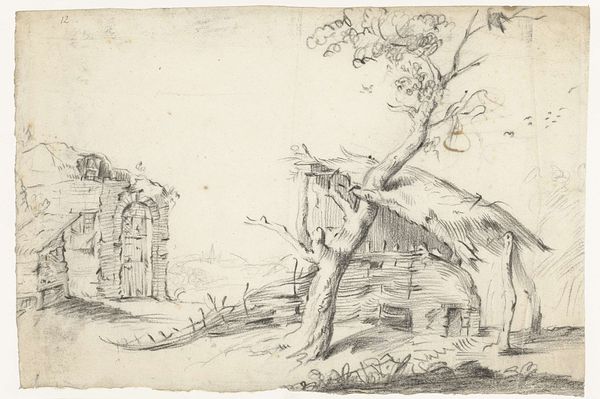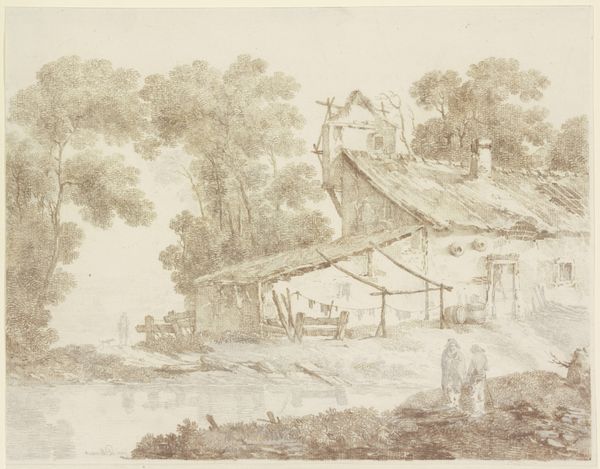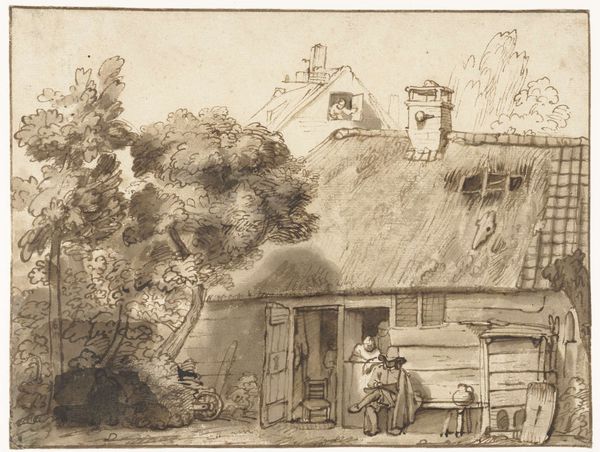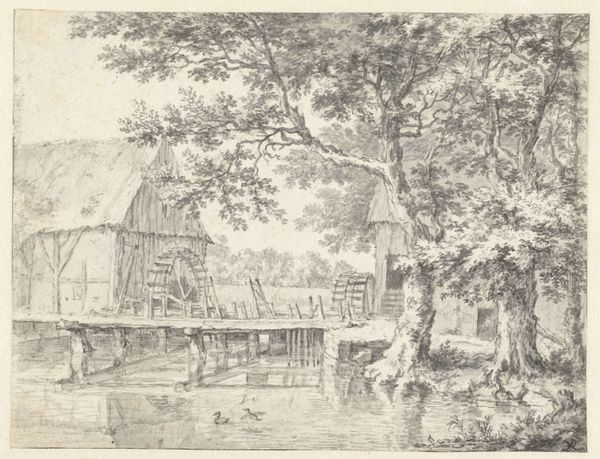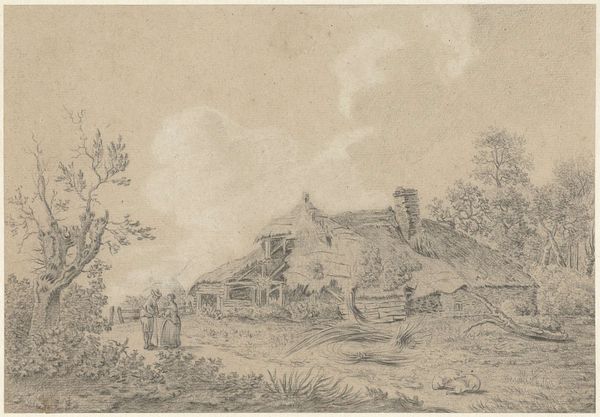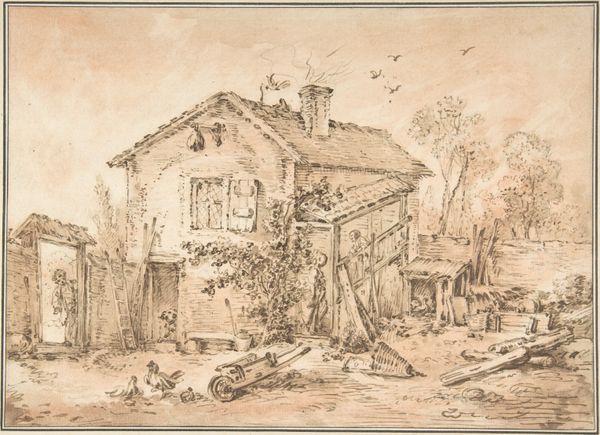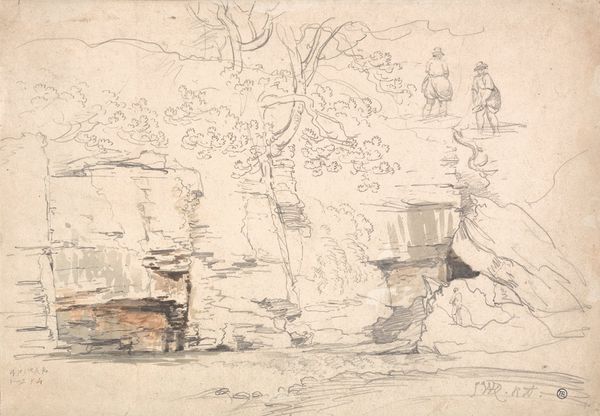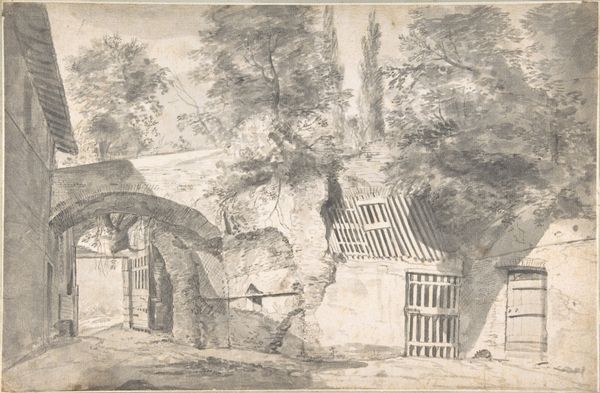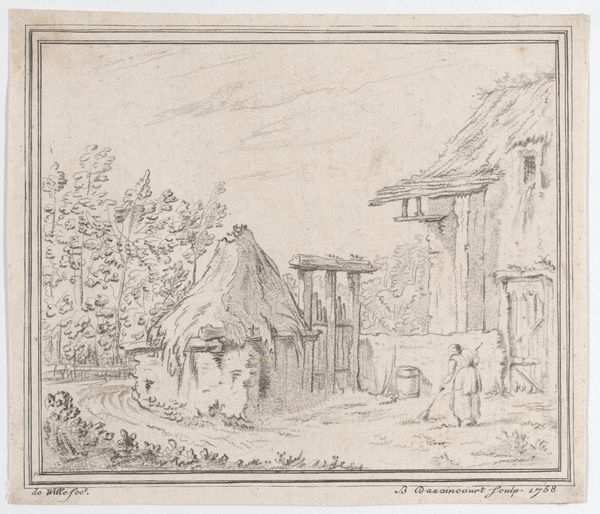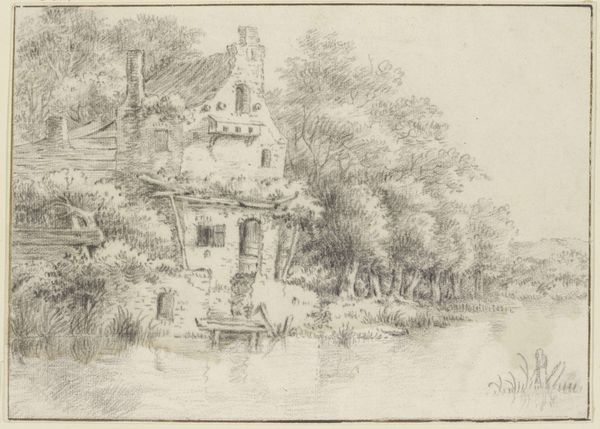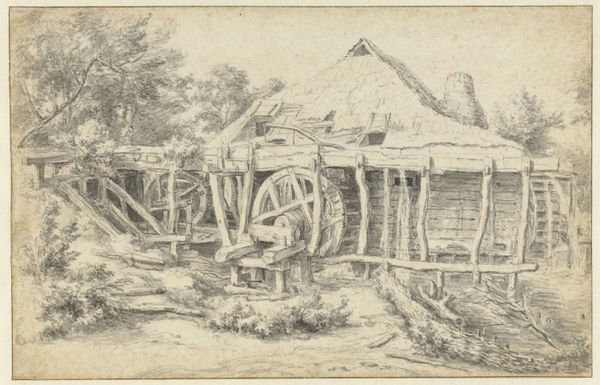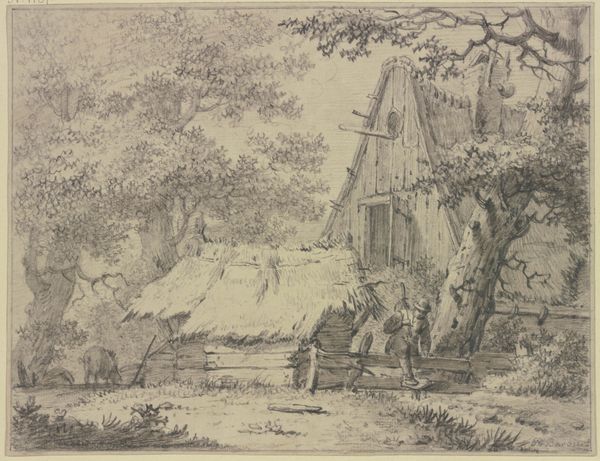
drawing, watercolor
#
drawing
#
dutch-golden-age
#
landscape
#
watercolor
Dimensions: height 193 mm, width 308 mm
Copyright: Rijks Museum: Open Domain
Curator: Welcome. We are standing before "Farmhouse with a Well," a watercolor and pen drawing made by Cornelis Dusart between 1670 and 1704. Editor: It feels like peering into a forgotten corner of the world. There’s a certain starkness, yet the delicate watercolor imbues the scene with a gentle, almost wistful quality. Curator: Notice how Dusart orchestrates space. The well itself is meticulously rendered, framed by both architectural forms and organic foliage. It guides our eye, moving from left to right in the landscape, which is typical of Dutch Golden Age landscapes, you know. Editor: This isn’t just about architectural structure and form, though, is it? It evokes an overwhelming quietude – or maybe better termed as melancholy, when thinking about life during this period. What sort of community occupied this land, and who had access to that well water? Curator: Indeed. Semiotically, the well serves as both a locus of life and a possible metaphor for hidden depths, isn't it? There's an interplay of solid shapes of the farmhouse compared to the openness of the water source. It generates compositional tension and harmony at once. Editor: Absolutely, that positioning also could be a commentary on land ownership and shared resources during the rise of capitalism, perhaps? The wear on the well's wooden support and the surrounding landscape tells of daily use, of the working class experience embedded in that location. Curator: That’s certainly one perspective. The subdued palette, though, limits some possibility of direct allegorical associations. This could have instead been about simple observations of Dutch rural life, arranged within a calculated formal arrangement, a serene geometry of Dutch pastoral space. Editor: Maybe so. Yet the simplicity belies deeper social echoes. What is left unsaid, regarding who occupied or maintained this space, adds another layer of discourse to an already dynamic conversation, one regarding life in this period and even through today. Curator: Agreed, this modest work encapsulates more than meets the eye. Thank you for the added viewpoints, making our formal investigation all the more enriching. Editor: Likewise, appreciating your lens, making "Farmhouse with a Well" relevant and reflective today.
Comments
rijksmuseum about 2 years ago
⋮
When Adriaen van Ostade died, Cornelis Dusart inherited the studio’s contents from his master. This included drawings by Adriaen’s brother, Isaac. Dusart made this landscape after one of Isaac’s drawings. Dusart’s copy is less detailed and a little dull compared to the original. Whether Dusart drew these copies purely to practise or perhaps to pass them off as genuine Van Ostades is no longer known.
Join the conversation
Join millions of artists and users on Artera today and experience the ultimate creative platform.

